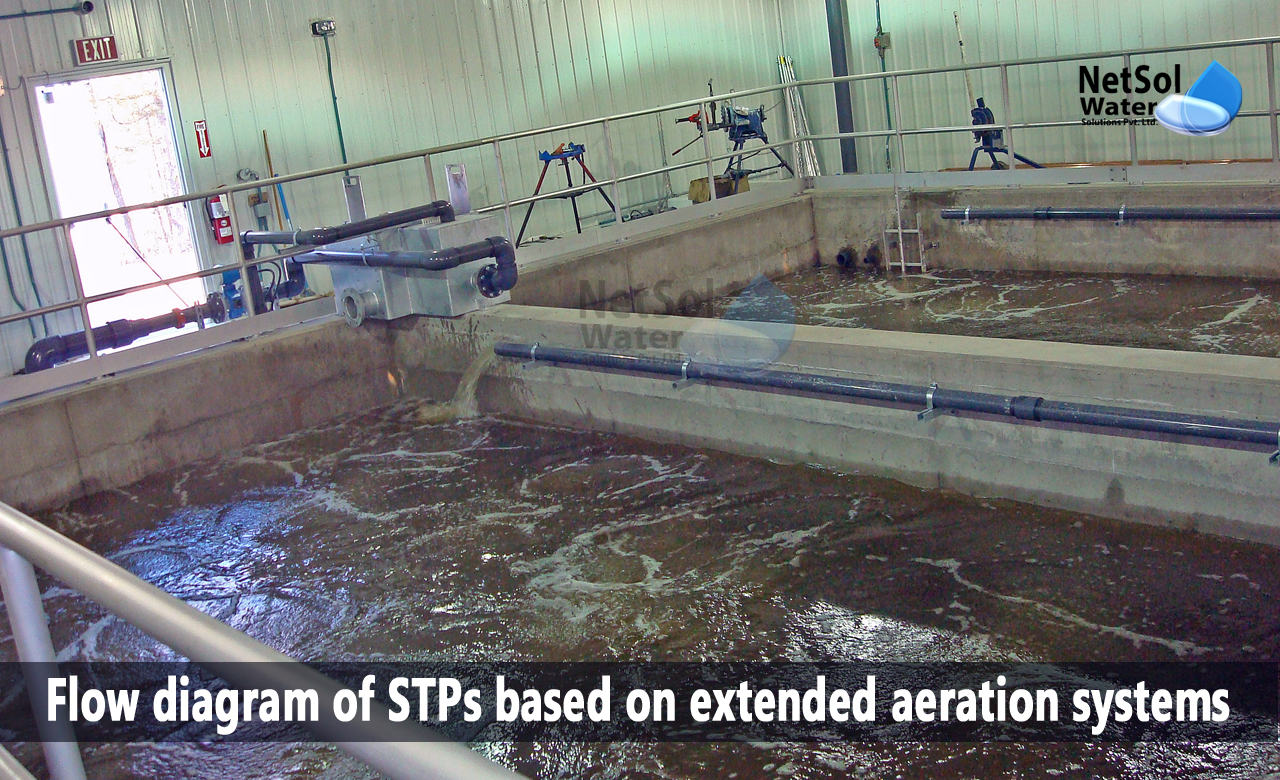Sewage treatment is a type of wastewater treatment that aims to remove contaminants from sewage, in order to produce effluent suitable for discharge to a nearby waterbody or onto land. It is divided into two stages: primary and secondary treatment, with advanced treatment including a tertiary treatment stage, with advanced processes and nutrient elimination.
One of the processes included in some STPs is extended aeration systems. Let us discuss it in detail.
What is extended aeration?
Extended aeration is a sewage treatment method that employs modified activated sludge procedures. It is preferred for relatively small waste loads where mechanical simplicity, compensates for lower operating efficiency.
Secondary Treatment Processes' Goal
Secondary wastewater treatment aims to significantly reduce sewage's biological component. This could be accomplished through chemical unit operations or biological processes, which use bacteria as a pollution removal catalyst.
Organic matter is commonly removed from wastewater using biological treatment processes. The Extended Aeration (EA) system is one of the most commonly used biological systems to treat household wastewater, due to its efficacy and simplicity.
Because, the treatment plant provides the proper environment, adequate oxygen, and other components, the bacteria can digest the organic waste and survive and reproduce. Aerobic bacteria and microorganisms break down the sewage and garbage in this manner, leaving it stable and odourless.
What are STPs based on extended aeration systems?
One of the modifications to the Activated Sludge Process is the Extended Aeration Process. This system incorporates aeration and mixing, settling, sludge return, and solids removal. It is a complete mix process that treats wastewater biologically, to remove biodegradable organic wastes under aerobic conditions.
The oxygen required to sustain the aerobic biological process is provided by mechanical or diffused aeration. Mixing is done to keep microbial organisms in contact with the dissolved organics. There is no need for a separate sludge digester because the aeration tank provides complete stabilization.
Due to the long detention time in the aeration tank, settleable organic solids are also allowed to settle in the primary sedimentation tank. It uses a low F/M organic loading rate, a long aeration time, and a high MLSS concentration. Endogenous respiration occurs as a result of the cells' prolonged detention in the aeration tank. The excess sludge generated in this process is minimal and does not necessitate separate digestion; instead, it can be applied directly to the sand drying beds, where aerobic digestion and dewatering of the sludge occurs.
Sewage treatment plant operational steps based on extended aeration systems
1. Raw residential wastewater is pumped from the final manhole into the primary screen, which has a mechanical coarse screen to filter coarse solids.
2. The screened sewage will then be lifted up to the secondary screen within the wet well, by a series of raw sewage pumps.
3. A heavy-duty mechanical fine screen is installed in the secondary screen chamber, to remove finer solid debris from the sewage.
4. Two aerated grit chambers are proposed after the fine screen chamber, to remove inert materials such as fine sand and gravel.
5. Finally, a grease/oil removal system is used in the pre-treatment system to remove any possible oil, in the sewage and ensure that the extended aeration system works properly.

Benefits of an extended aeration system
• Plants are simple to operate because operation is limited to two or three hours per day.
• Because, there is more time for nutrients to be assimilated by microbes, extended aeration processes are often better at handling organic loading, and flow fluctuations.
• Systems are odourless, can be installed in most locations, have a small footprint, and can be landscaped to blend in with the surroundings.
• Because, of the long sludge ages, extended aeration systems have a relatively low sludge yield, can be designed to provide nitrification, and do not require a primary clarifier.
How can we assist?
If you have any questions about wastewater treatment plants or if you would like to discuss your specific needs, please contact the Netsol Water team right away! Our team is an expert in water and sewage treatment and can help you tailor a solution to your specific requirements.
We collaborate with our clients to design a customized sewage treatment solution that meets their specific requirements, as well as an on-going service plan to completely maintain their system.
Netsol Water is Greater Noida-based leading water & wastewater treatment plant manufacturer. We are industry's most demanding company based on client review and work quality. We are known as best commercial RO plant manufacturers, industrial RO plant manufacturer, sewage treatment plant manufacturer, Water Softener Plant Manufacturers and effluent treatment plant manufacturers. Apart from this 24x7 customer support is our USP. Call on +91-9650608473, or write us at enquiry@netsolwater.com for any support, inquiry or product-purchase related query.



